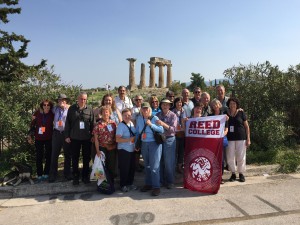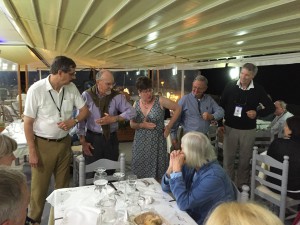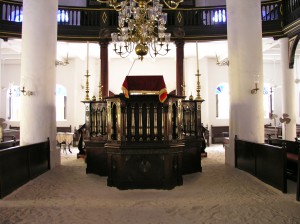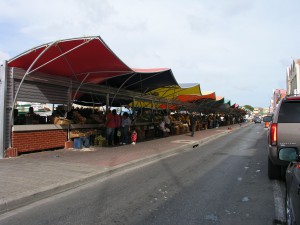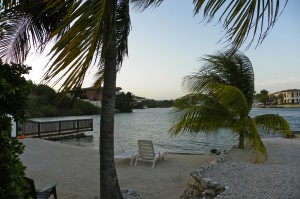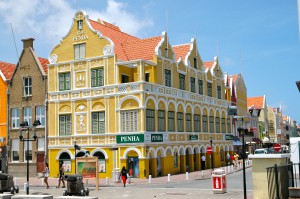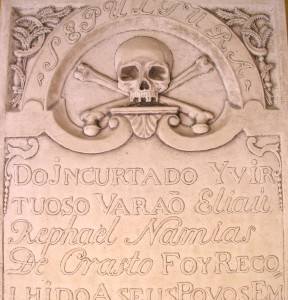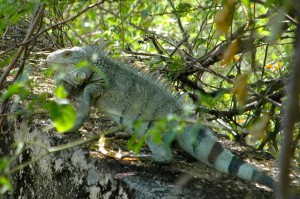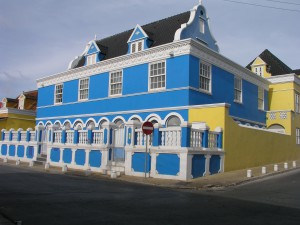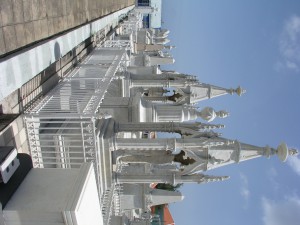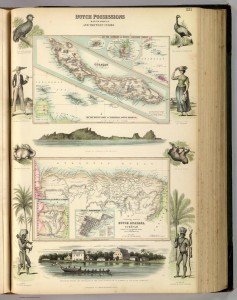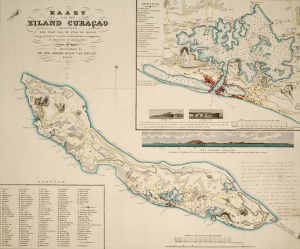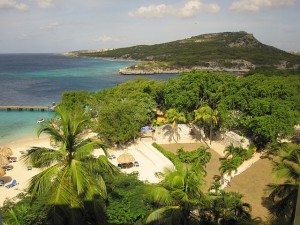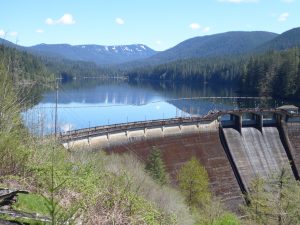
Alumni College ’17: Water, Water, Everywhere
Program Description
Tuesday, June 6
Opening reception and Gorge preview talk (for full-program participants and those who are participating in the Wednesday session)
We’ll gather in Reed’s historic Parker House for a reception featuring fresh and local foods and beverages. Following introductory remarks, John Laursen ’67 will start things off with an illustrated presentation of the Columbia River Gorge before the dams. John will show images collected and crafted into his collaborative work with Terry Toedtemeier, Wild Beauty. This is the perfect precursor to the Wednesday’s program.
Meals: appetizers, beer, wine
Schedule: 6-9 p.m. Parker House
Wednesday, June 7

This Gorge was Made for You and Me:
An examination of a transportation corridor, an energy source, a drinking water source, and a habitat—among other things.
This will be a full day, running from breakfast through dinner. We will weave multiple threads through the day’s programming. The program begins with a presentation and discussion of water rights—both in history and today. Then we will board our bus and head through the Gorge. With our trusty geologist Jim Jackson ’70 as our guide, we will see how water has shaped this land and the role that floods have played on the landscape.
Much of the activity will focus on the Washington side of the river, a side that gets far less traffic than the Oregon side. Our first stop will be the Army Corps’ adult salmon fish hatchery. Entrance to this facility is tightly controlled, and it is because of our resident tribal fishery expert, Henry Franzoni ’78, that we will be able to visit. Following a discussion of the tensions between competing uses and needs on the river, we will have a catered lunch at the dam.
During lunch, we will enjoy a conversation with Michelle Nijhuis ’96 about the challenges she faces as a science writer, trying to convey the issues to an audience that includes National Geographic and the New Yorker.
Mosier, Oregon is the next stop. We will head over the bridge that connects Bingen, WA and Hood River and stop in the tiny town that found itself the center of attention after an oil-train fire brought simmering tensions to the front page. Local Reedies were quite involved in the issue, and we will meet with some of them. Another issue in the region concerns whose water it is and the battle between Nestle and the residents of Hood River County over the proposed sale of water rights to the company. Some of those residents will be on hand to share their thoughts as well.
The next stop involves us getting close to the river at Horsethief Lake State Park (back on the Washington side of the river). From this spot, we will be very close to the submerged village of Celilo. And here we will not only learn about how the native peoples depend on water and salmon, but we will stay here for an early dinner consisting of fresh tribal-caught salmon and other local treats.* An added bonus will be the chance to visit the nearby petroglyphs and get a tour of “She Who Watches” (requested, but not yet confirmed).
While it is still daylight, we will head back to Reed.
*The five first foods of the local Indians were: water, salmon, deer and elk, roots (bitter root, etc.), and huckleberries. We are planning on sampling all of these!
Meals: breakfast, lunch, dinner
Schedule (as of April 20)
8:30 a.m. Breakfast
9:00 a.m. Welcome
9:15 a.m. History of water rights & current issues
10:30 a.m. Depart for Bonneville Dam via Bridge of the Gods
11:30 a.m. Tour fish hatchery
12:45 p.m. Lunch and science communication discussion
1:45 p.m. Depart for Mosier
2:15 p.m. Discussion: Oil and coal trains, drinking water and local tensions
3:15 p.m. Depart for Horsethief Lake State Park
4:00 p.m. Tour petroglyphs
5:00 p.m. Reception & early dinner
8:00 p.m. Projected return time to Reed
Thursday, June 8
From Bull Run to the Benson Bubblers:
Tracing Portland’s drinking water
This day will have three parts. We will begin with a continental breakfast in the Reed canyon (weather permitting). Here we will be treated to a discussion with current students who have used the canyon as a laboratory. Participants will learn from Zac Perry, Reed’s canyon specialist, how he works with students to steward this precious resource.
Then it’s time to get on the bus and head up to the flank of Mt. Hood where the experts at the Portland Water Bureau give us a special tour of the Bull Run reservoir and watershed. When we are up on the watershed, we will learn about how fragile this resource is and how the bureau works to keep the water clean and the flora and fauna native. The experience will be highlighted by short hikes and a catered lunch at a very scenic overlook. On the way back, we will trace the water flow and visit a historic powerhouse that is being given a new life in a spectacular setting. The field trip will return in time for participants to enjoy receptions and dinners back on campus.
The day concludes with a talk by one of Reed’s alumni who are changing the world. Sasha Kramer ’99 (biology) founded SOIL and has been working in Haiti to improve the living conditions by focusing on sustainable farming practices, innovate use of human waste that is turned unto usable compost, and effective water treatment.
Meals: breakfast, lunch
Schedule (as of April 20)
8:30 a.m. Breakfast in the canyon & presentation of the canyon as a lab for Reed students
9:15 a.m. Break
9:30 a.m. Depart Bull Run (note: the water department staff will lead this part of the program and will manage the time until we return to Reed)
12 noon Lunch
4:30 p.m. Return to Reed from Bull Run
7:30 p.m. Keynote address
Sasha Kramer ’99:
“Transforming Wastes into Resources in Haiti: Reed graduates contribute to protecting water and rebuilding soil using human waste (or just call it poop if you think it is more appropriate :)”
Friday, June 9
Local to Global Issues:
A Look at Farms, Wildlife, and Water on Sauvie Island
After another canyon breakfast, we will board the bus for our brief journey to the local treasure that is Sauvie Island. Once on the island, we will visit the wildlife refuge and see the challenges that wildlife face on the island as well as in the city. This discussion will be led by Bob Sallinger ’91. In addition, we will get a chance to learn about wildlife photography from an expert, Steve Halpern ’83—from ethical issues to practical strategies to make better pictures. Then we will visit some farms and discuss farming with some local alumni. And since we are surrounded by fresh produce, we will enjoy some samples as well. Then it will be time for us to enjoy a lunch on the island, one that features local foods—including fresh strawberries! Then we will return to Reed for our concluding session.
Our final session will take some of what Sasha Kramer ’99 said the night before and combine it with commentary from Molly Case ’12 and Leah Page ’07 and Professor of Economics Noelwah Netusil on the issue of international development and the role that water plays in international politics and diplomacy. And after some erudite and incisive concluding comments, participants will leave this year’s Alumni College with a deeper understanding of the interconnectedness of these issues in Portland and the world.
Meals: breakfast, lunch
Schedule (as of April 20)
8:30 a.m. Breakfast in the canyon & presentation of the photography ethics concerning wildlife
9:15 a.m. Break
9:30 a.m. Depart for Sauvie Island
10:15 a.m. Tour wildlife refuge
11:15 a.m. Visit farms
12 noon Lunch
1:15 p.m Return to Reed from Sauvie Island
1:30 p.m. Concluding session: “Going Global: National and international issues involving water”
3:00 p.m. Alumni College concludes
******
Alumni College Faculty:
John Laursen ’67 is a writer, designer, editor, and typographer. For four decades he has owned and operated Press-22, a Portland studio specializing in the design and production of high-quality books and text-based public art projects. Among the institutions for which he has produced books and art catalogues are the Oregon Historical Society, the Portland Art Museum, Whitman College, Reed College, Marylhurst University, Oregon Health & Science University, and the Regional Arts & Culture Council. His work in public art includes the creation of commemorative installations for the Oregon Cultural Heritage Commission and serving on the design team for the Oregon Holocaust Memorial.
Laursen was born in Tacoma, Washington; as a child he lived in Washington, Oregon, Minnesota, Massachusetts, Arizona, and California. He first experienced the Columbia Gorge on his family’s many trips back and forth across the country. Laursen came to Oregon in the 1960s to attend Reed College, where he became further enthralled with the varied landscapes of the Pacific Northwest. In addition to his degree from Reed he holds a master’s degree in political science from UCLA.
Jim Jackson ’70 is a geologist who spent more than 20 years working for Atlantic Richfield Company before turning to the classroom. He recently retired from Portland State where he was a popular professor of geology. Jim gives talks and leads field trips all over the region and is a wealth of information about all things geologic.
Bob Sallinger ’91 has worked for Portland Audubon since 1992. His current responsibilities include directing local, regional, and national conservation policy initiatives, wildlife research initiatives, the Backyard Habitat Certification Program, and Wildlife Care Center. Bob’s passion for conservation was developed early exploring the woods of Massachusetts and later on solo hikes from Mexico to Canada on the Pacific Crest Trail and from Canada to Southern Colorado on the Continental Divide.
Bob has a B.A. in biology from Reed College and a J.D. from Lewis and Clark Law School. He currently serves on the board of Humane Oregon and as an adjunct professor of law at Lewis and Clark Law School. He lives in Northeast Portland with his wife Elisabeth Neely, three children, and an assortment of critters including dogs, cat, goats, pigeons, chickens and a hedgehog
Henry Franzoni ’78 left Reed to play avant-garde rock, but then he became involved in Columbia Basin battle for the survival of salmon and other anadromous fish moving through the mainstream dams on in the Columbia Basin in 1997; it was at that time he got sucked into the fight which consumed him for the next 20 years. The problem of the dams and the fish was a specific case of the problem of equitable allocation and preservation of natural resources. He aspired to become a true conservationist, factoring in human-resource consumption along with resource preservation. Franzoni co-authored a few peer reviewed papers for the Comparative Survival Study which became been minorly influential in the salmon pond of the Columbia Basin fish world.
After an interlude which involved other projects, he then went back to the volts vs. smolts war in the Columbia basin to work for the Columbia River Inter-Tribal Fish Commission for eight years, leading the Inter-Tribal Monitoring Data Project, part of a team to build legally defensible accounting systems for tribal natural resources, and part of a larger team trying to put fish back in the rivers, restore the riverine environment, and express and defend the rights of the tribes and the tribal fishers.
Michelle Nijhuis ’96. After 15 years off the grid in rural Colorado, Michelle now lives in White Salmon, Washington, on the north side of the Columbia River Gorge. A lapsed biologist, she specializes in stories about conservation and global change, but has covered subjects ranging from border security to wrestling with her daughter’s conviction that Bilbo Baggins is a girl.
Her work appears regularly in National Geographic, the New Yorker’s Elements blog, and the science section of the Atlantic, and she is proud to be a longtime contributing editor of High Country News, a scrappy institution that produces some of the finest journalism in the American West. Michelle is the co-editor of The Science Writers’ Handbook: Everything You Need to Know to Pitch, Publish and Prosper in the Digital Age, published by Da Capo Press, and the author of The Science Writers’ Essay Handbook: How to Craft Compelling True Stories in Any Medium. And she is also a contributor to the award-winning science blog The Last Word on Nothing.
Her reporting has won several national honors, including two AAAS/Kavli Science Journalism Awards and the Walter Sullivan Award for Excellence in Science Journalism. Her writing has also been included in three Best American anthologies.
Dr. Sasha Kramer ’99, the Co-Founder and Executive Director of SOIL, is an ecologist and human rights advocate who has been living and working in Haiti since 2006. After Reed she received a PhD in ecology from Stanford University. She has been recognized as a National Geographic Emerging Explorer, a Schwab Foundation Social Entrepreneur of the Year, and an Ashoka Fellow.
Leah Page ’07 spent many years as “SOIL’s Pro-Bono Development Director,” squeezing trips to Haiti between jobs with the United Nations, Mercy Corps, and other global relief agencies, before joining SOIL full time in 2010. What she most loves about SOIL is that its ecological sanitation efforts are designed in collaboration with the Haitian communities they are designed to benefit and that her colleagues are whole-heartedly dedicated to developing viable, ecological solutions to problems that were previously viewed as intractable. Leah and her husband are currently growing their garden and their two young sons in Richmond, VA while Leah telecommutes to work in Haiti over Skype. Leah was an alt-bio major at Reed and took as many economics courses as she could fit in her schedule.
Molly Case ’11 first joined SOIL after graduating from Reed in 2012 and now works as the Deputy Development Director. She loves getting to work on systems-based solutions and especially appreciates the SOIL team’s unwavering commitment to providing safe, full-cycle sanitation services to some of the world’s most vulnerable communities. In her spare time Molly loves to travel as much as possible, usually to spend time with her Reedie friends who are scattered across the globe. Molly was an economics major at Reed, and loves to daydream about coming back for several more bachelor’s degrees someday.
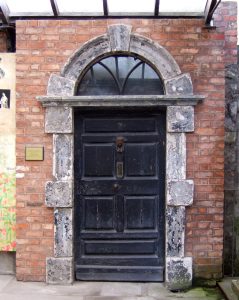
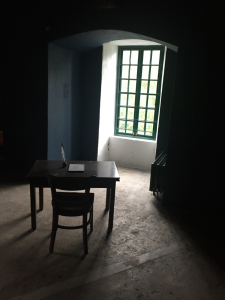
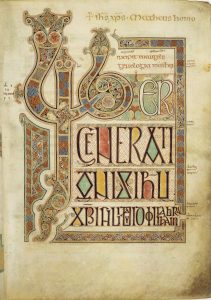
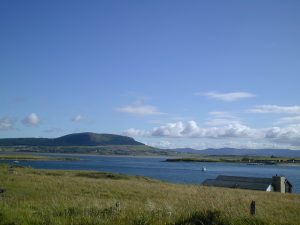
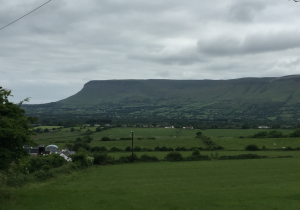
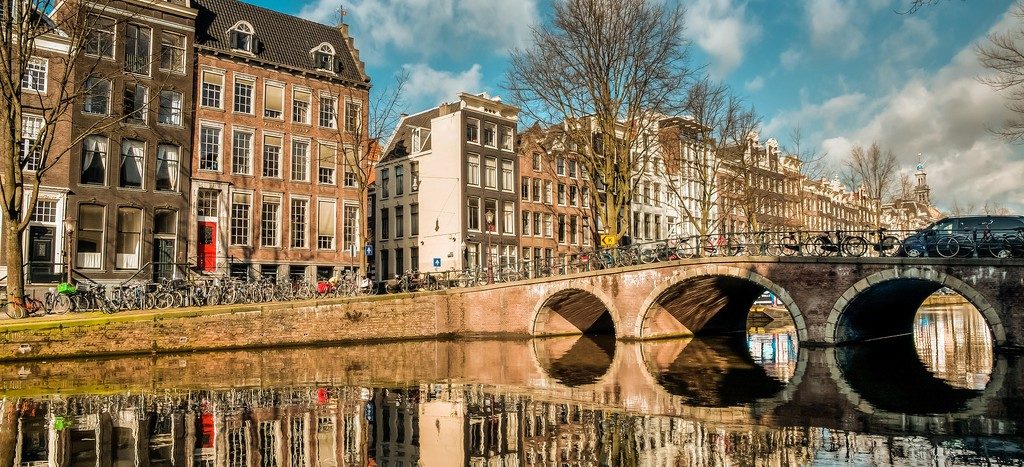 Amsterdam, the capital city of the Netherlands, is famous for its tourist attractions and their accessibility. On this trip, we will toggle between some of the more notable sites to others that often are missed, both in the city of Amsterdam and in its nearby surroundings. The variation on the theme is that we will look at what Simon Schama called “Holland’s Embarrassment of Riches” (do read the book in advance, if you can) not from the point of view of the visitor, but rather from the point of view of people who have spent a considerable amount of time living in Holland. Time being scarce, we have only a week to do it, so it will be a full week. In the seven days actually on site, five of them will be spent as a group (three in Amsterdam and two outside) and for the other two days, we will suggest a number of alternatives and assist you in planning your individual excursion.
Amsterdam, the capital city of the Netherlands, is famous for its tourist attractions and their accessibility. On this trip, we will toggle between some of the more notable sites to others that often are missed, both in the city of Amsterdam and in its nearby surroundings. The variation on the theme is that we will look at what Simon Schama called “Holland’s Embarrassment of Riches” (do read the book in advance, if you can) not from the point of view of the visitor, but rather from the point of view of people who have spent a considerable amount of time living in Holland. Time being scarce, we have only a week to do it, so it will be a full week. In the seven days actually on site, five of them will be spent as a group (three in Amsterdam and two outside) and for the other two days, we will suggest a number of alternatives and assist you in planning your individual excursion. Monday, April 24. Museum day. For our first full day in town, we will examine two marvelous collections. First is the Van Gogh museum, and then after a hosted lunch at a nearby restaurant, we will visit the newly renovated Rijksmuseum. Your evening is free. You can catch up on jet lag, go to a concert or theatre, or check out the coffee shops and bars in neighborhoods close to the hotel or a short tram ride away.
Monday, April 24. Museum day. For our first full day in town, we will examine two marvelous collections. First is the Van Gogh museum, and then after a hosted lunch at a nearby restaurant, we will visit the newly renovated Rijksmuseum. Your evening is free. You can catch up on jet lag, go to a concert or theatre, or check out the coffee shops and bars in neighborhoods close to the hotel or a short tram ride away.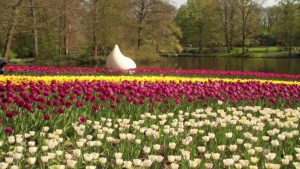 At a designated time, we will regather at the Leiden train station (riding your bicycles or taking the shuttle busses back) and go to the home of Stephan deSpiegeleire (Belgian scholar at the Hague Center for Security Studies who specializes in Eastern Europe) and Zoe Farnsworth (American teacher at the American School of the Hague). We will be joined for this dinner by Dutch people who are conversant with Dutch and European politics, health care, information-technology policy, and who welcome conversations with Reed-type people. That evening, we will take the train (and tram) back to Amsterdam and our hotel.
At a designated time, we will regather at the Leiden train station (riding your bicycles or taking the shuttle busses back) and go to the home of Stephan deSpiegeleire (Belgian scholar at the Hague Center for Security Studies who specializes in Eastern Europe) and Zoe Farnsworth (American teacher at the American School of the Hague). We will be joined for this dinner by Dutch people who are conversant with Dutch and European politics, health care, information-technology policy, and who welcome conversations with Reed-type people. That evening, we will take the train (and tram) back to Amsterdam and our hotel.
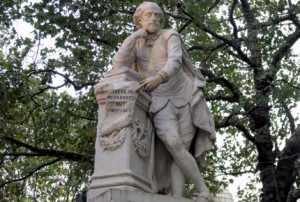 Immerse yourself in London’s theatre scene with seven plays over 10 days! Limited seats for guided discussions, expert insights, and special access to behind-the-scenes programs for the group.
Immerse yourself in London’s theatre scene with seven plays over 10 days! Limited seats for guided discussions, expert insights, and special access to behind-the-scenes programs for the group.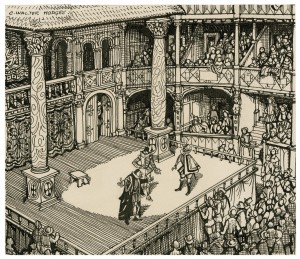
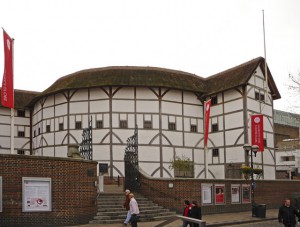 Cost: Based on requests from travelers, we are pleased to offer some pricing options: $2,800/person double occupancy (includes hotels, opening and closing receptions, guided seminars, private coach transport from London to Stratford, mid priced seating at plays). Single supplement $400.
Cost: Based on requests from travelers, we are pleased to offer some pricing options: $2,800/person double occupancy (includes hotels, opening and closing receptions, guided seminars, private coach transport from London to Stratford, mid priced seating at plays). Single supplement $400.